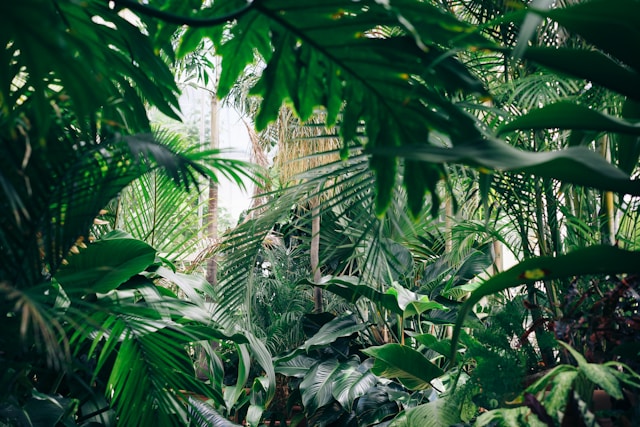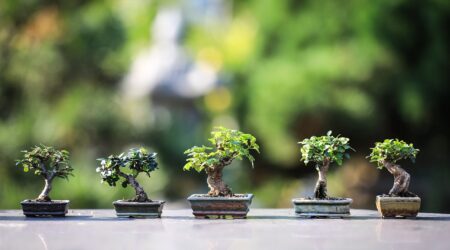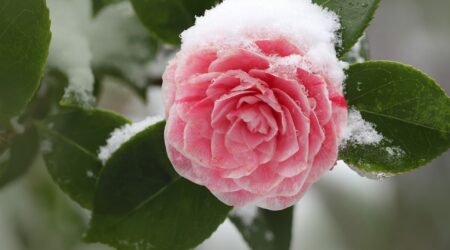Plantas raras e inusuales para agregar a su colección
The appeal of rare and exotic plants
Rare or unusual plants have a special appeal for gardening enthusiasts, zapiaria enthusiasts and inveterate gardeners. NOT only do they add a touch of originality and exotic beauty to the whole that those crickets in them silence, but they are also an interesting challenge (following the old saying of “from the unexpected, just before expecting it because no one had ever thought to see it”). something like that).They are a rewarding gift for any lover of rare species: Let these plants transform a common garden into a botanical spectacle, making that passageway that gave you no more impression than the usual one is filled with soprano cheers of admiring people. or at least, curious.Benefits of collecting rare plantsCollecting rare plants is not simply a fascinating hobby; it can also have several benefits, including the conservation of endangered species and the promotion of biodiversity awareness. More importantly the staff run the plants in a way that very few others can.
Additionally:, these plants can raise the overall biodiversity and health of your garden, and contribute to greater biodiversity in the regional ecosystem.Knowing Your Rare Plants:Research and Selection: How to Choose the Best Rare Plants for Your CollectionBefore introducing rare plants into your collection, it is essential to do thorough research. Investigate the growing conditions, climate, and specific care each plant requires. The selections were both about benefits and were aimed at what had to be chosen within that perimeter, as well as something else. The choice of plants should be based on your abilities and your environment. Consult specialized books, gardening forums and nurseries that offer catalogs with detailed information about rare plants and their needs.
What to consider when selecting rare plants: climate, space and time for care. Wherever you buy rare plants, keep in mind what grows well in your region’s climate. Some exotic plants cannot adapt well to certain temperatures or humidity levels. Additionally, evaluate the space available in your garden or greenhouse and what environment these plants need. Care time is also crucial: some rare plants need constant and specialized attention, while others are still easier to care for and less resistant.Some examples of rare and out-of-place plants:1. Welwitschia mirabilis: Ancient plant In the Namib Desert, west of Africa, there is a unique plant due to its characteristics and origin, the Welwitschia mirabilis. It is said to be as long-lived as a thousand years, it has only two leaves that grow uninterruptedly throughout its life. Due to its strange appearance and its ability to survive the most extreme conditions, this plant will always be an intriguing acquisition for any collector of rare plants.2. Amorphophallus titanum: Corpse flower Popularly known as corpse flower for the unpleasant odor it gives off when flowering, Amorphophallus titanum was once an impressive and rare plant. Native to the rainforests of Sumatra, this plant can reach three meters in height. It is a rare and spectacular event when it blooms, for which enthusiastic botanists from all over the world flock here.3. Puya raimondii: Queen of the AndesPuya raimondii, or “queen of the Andes,” is a giant plant native to the Andes in Bolivia and Peru. It can grow up to ten meters tall and blooms only once in its life, after 80 to 100 years. A rare gem for plant collectors, its imposing structure and complete life cycle.
Rafflesia arnoldii: The greatest flower in the world
Rafflesia arnoldii is known as the largest flower in the world, reaching up to one meter in diameter. This parasitic plant, which grows in the Indonesian rainforest, is famous not only for its size, but also for the smell of rotting meat. Although difficult to grow, its rarity and splendor of flowering make it highly appreciated by collectors.
Simian Dracula: The Monkey Face Orchid
The Dracula simia, or “monkey face orchid”, is an interesting plant that grows in the rainforests of Ecuador and Peru. It gets its name from the unusual shape of its flowers, which resemble the face of a monkey. This orchid lives in cool, moist environments, and its unique appearance makes it an interesting addition to any collection.
Maintenance and Care:
Optimal growing conditions for rare plants
Each rare plant has specific growing needs. It is absolutely vital to provide adequate lighting, temperature, humidity and environmental conditions. Some exotic plants, for example, may require indirect sunlight but high humidity, while others prefer drier conditions and warmer temperatures. Adjusting your growing environment to each plant’s individual needs is essential to its success.
Irrigation and fertilization methods
Proper watering and fertilization are crucial to maintaining rare plants. Irrigation has to be adapted to the needs of each species. Some plants need frequent and abundant watering, while others will need moderate watering or even stay dry. Fertilization must also be specific: use fertilizers that provide the necessary nutrients appropriate for each plant, but without overfeeding them – as this can damage them due to excess.
Agma Pests: While rare, plants often have specific problems with pests or diseases. It is important to monitor your plants regularly and take preventive measures to avoid a large infestation. Use non-toxic methods whenever possible, and keep in mind that clean air and proper ventilation reduce the risk of disease in your plants. If a plant is affected, act quickly to prevent it from spreading to other plants.
Some more Tips:
Source for acquiring rare plants – Specialized and hobby nurseries Acquiring rare plants can be a problem, as they are often not found in normal nurseries. Find nurseries that offer exotic plants or contact collectors who are willing to trade or sell plants. Also, create a collection of visits to plant fairs or horticulture exhibitions: a productive and enjoyable experience.
Online training and communities of plant loversLovers of rare plants find the Internet convenient. Join online forums and groups (on social media) where plant enthusiasts talk about their experiences and offer advice. Getting involved in these communities can provide us with useful knowledge and sometimes opportunities to collect new plants. On the other hand, several specialized sites on the Internet not only offer specific cultivation guides but also online stores to buy collections of many species.
Constant experimentation and learning Hard There is no end to how to grow rare plants. Don’t be afraid to experiment with different methods of caring for and maintaining them. Each plant may respond differently to our observation of growing behavior, so this is an important key to success. As you do experiments, record the results so you can learn from your successes and failures.
Conclusion:
Celebrating botanical diversity in your garden.
Inspiration for future projects
Finding and growing rare plants can inspire you to take on new projects and challenges in your garden. Whether you care about the conservation of endangered species, are dedicated to creating exotic themed gardens or simply enjoy expanding your personal collection, each new rare plant you add brings opportunities for both study and discovery. Caregiver stimulation
The dedication and care required for these rare plants can be truly rewarding, both for your personal soul and for the conservation of biodiversity.








Deja una respuesta